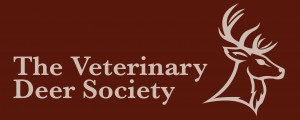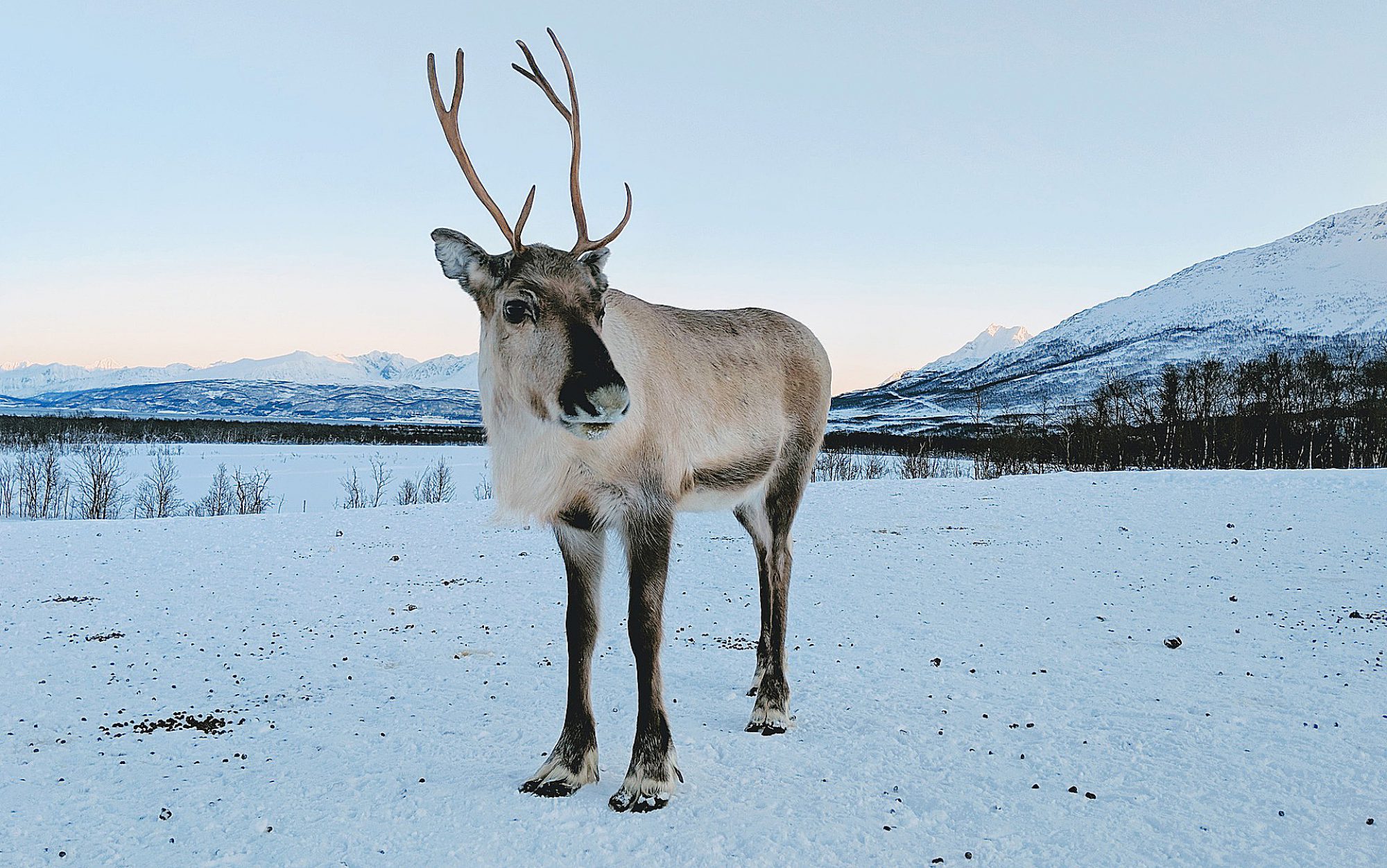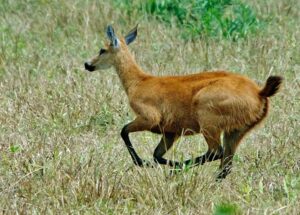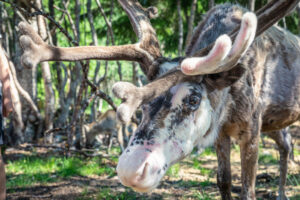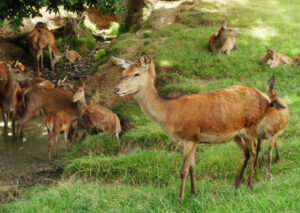Health and Welfare of Reindeer | Veterinary Deer Society
Introduction
The Farm Animal Welfare Committee (FAWC) report “Opinion on the welfare of farmed and park deer” (2013) raised some concerns about the welfare of reindeer and included the following wording:
“Reindeer (Rangifer tarandus) are kept in the UK but are not farmed. There is a long established free-ranging herd in the Scottish Cairngorms but in recent years other reindeer have been imported and kept in small zoological collections or open farms where they are used as a visitor attraction, particularly at Christmas. There have been a number of reports of ill thrift and death in these animals due to poor management and their special dietary and environmental requirements. Reindeer are out with FAWC’s remit because they are not farmed but we strongly suggest their welfare should be considered further by the Government as they are particularly likely to be kept by inexperienced owners for commercial reasons.”
Reindeer numbers
The number of reindeer in the UK has probably grown in recent years based on the numbers imported and recorded on the TRACES system. From 2005 to 2013 there were 90 consignments of reindeer imported, totalling 1168 deer, with most coming from Sweden and Finland, with some from Denmark, Germany, Netherlands and Norway.
The number of reindeer in the UK is unknown because there is no formal requirement for them to be recorded on any official data base. Agricultural census data and the Animal Movement Licensing System (AMLS) do not readily distinguish reindeer from other deer species and it is likely that smallholders will not register their reindeer because they are not perceived to be farmed. It has been estimated that there may be 1500 in the UK.
Legal requirements
Welfare: Reindeer are protected by the Animal Welfare Act 2006 and Animal Health and Welfare (Scotland) Act 2006 as animals “under the control of man on a permanent or temporary basis”. This legislation makes it an offence to cause unnecessary suffering and for keepers to fail to ensure their needs are met to the extent required by good practice. These needs include: provision of a suitable environment and diet, to be able to exhibit normal behaviour patterns, to be kept with, or apart from, other animals, and to be protected from pain, suffering, injury and disease.
Recommendations for the welfare of farmed deer are made in the “Codes of recommendations for the welfare of livestock – Deer”. However this code was written with the more commonly farmed deer species in mind and does not give advice that is applicable in all instances to the health and welfare of reindeer.
Reindeer kept for display may be part of a registered zoological collection and subject to inspection under the Zoo Licensing Act of 1981.
Council Regulation (EC) No. 1/2005 (regarding the protection of animals during transport) states that cervine animals in velvet shall not be considered fit for transport. Reindeer differ from more common, farmed types of deer in that both sexes develop antlers which are highly sensitive until growth is complete and the velvet is shed – normally by the end of August. Castrated males may have residual velvet in November/December when they are transported for displays but the antlers are then much less sensitive than in the actively growing period. Reindeer are usually handled as individuals rather than a herd and this includes being loaded and unloaded for appearances, although they are usually transported in small groups.
Disease control: Movements of reindeer should be recorded under the AMLS and by the owner under the requirements of The Movement of Animals (Records) Order 1960. The transport of reindeer can raise some complexities given that regular appearances at a Christmas event may require repeated movements between the venue and temporary accommodation before returning to the home location.
The Tuberculosis (Deer) Order 1989 requires the identification of deer kept on a deer farm, which is defined as a place where “farmed deer” are kept. “Farmed deer” are those “i) kept by any person by way of business on land enclosed by a deer-proof barrier; and ii) are kept by him— for sale; or primarily for the purpose of the production of meat or other foodstuffs or skins or other by-products; or primarily for breeding purposes“. This can be read as excluding reindeer used as performance and display animals, provided they are not also used for breeding or sale. All deer are subject to the disease control measures for TB under the 1989 Order.
Health and welfare issues in reindeer
It is acknowledged that herds of reindeer have been maintained in the UK in large scale ranging systems akin to conditions in Scandinavia, as well as various zoological collections; there are also several large breeding herds. In Scandinavia, reindeer are herded as semi-domesticated animals in large herds in challenging environmental conditions which are in harmony with their particular anatomical and physiological adaptations that enable them to survive in arctic weather conditions. Reindeer imported into countries, such as the UK, which have very different environmental conditions to those for which these animals are adapted need careful management if they are to thrive. Reindeer demand high levels of care to avoid health problems. Good husbandry practices must include a suitable diet, minimal stress and a preventative health plan. They should be provided with good quality hay and lush pastures should be avoided. Feeding proprietary concentrates specifically formulated for reindeer is strongly recommended rather than using other concentrate formulations produced for small ruminants or cattle. Dietary changes should be made slowly as sudden changes can lead to gastrointestinal disturbances and anorexia. They should be given adequate trough space to reduce competition for food which can lead to additional stress. As these are herding animals they should ideally be kept in groups and not as single animals. It is also important to remember that while in the UK these animals may be exposed to a variety of diseases and pathogens, often associated with other domestic livestock, to which they have little natural immunity.
Reindeer submissions to AHVLA and SAC during 2013 were examined to highlight any trends regarding age, primary presenting sign and diagnosis. Forty eight diagnostic submissions were analysed involving both carcases (15) and non carcase (33) samples. Thirty eight (79%) of the 48 submissions involved animals said to be adults, 6% (3/48) were classed as post weaned, 4% (2/48) pre-weaned, 2% (1/48) neonates and the remainder of the submissions did not specify an age. The most common primary presenting sign was diarrhoea involving 42% (20/48) of cases, in 23% (11/48) of submissions the presenting sign was not known and in almost 15% (7/48) of cases the animal had been found dead. Malaise, wasting, lameness and nervous signs were reported in 2-6% of submissions. Overall a diagnosis was made in almost 30% (14/48) of cases and 71% (10/14) of these diagnoses involved enteric disease. Parasitic gastroenteritis and rumen fluke (3 cases each) were the most common diagnoses with single cases of cryptosporidiosis, ruminal acidosis, Johne’s and non-specified digestive disease recorded. The other four cases in which a diagnosis was made involved three cases of pneumonia and one case of malignant catarrhal fever: a condition which is discussed further below.
Endoparasitism and Enteric disease
Reindeer are very susceptible to endoparasites particularly nematodes (including Haemonchus, Ostertagia, Nematodirus, Teladorsagia and Trichostrongylus species) and liver fluke. They do not develop substantial resistance to worms and need regular worming and access to clean grazing/pasture. Lungworm infection caused by Dictyocaulus species is commonly recorded in other deer species and can affect reindeer but according to AHVLA and SAC submission data it has only been diagnosed twice in this species over the last 10 years. Evidence of exposure to protostrongylid lungworms such as Elaphostrongylus cervi has been found in reindeer in Scotland although evidence of clinical disease due to larval migration in the central nervous system, lungs or skeletal muscles is limited. Rumen fluke (Paramphistomes) have been recorded (see above) although in Finland (and possibly also in the UK) this parasite is not considered pathogenic.
With respect to the 20 cases submitted to investigate diarrhoea, a diagnosis was made in only two of these (ruminal acidosis and cryptosporidiosis). It is probably safe to assume that the cause of the diarrhoea in a significant number of the undiagnosed cases related to dietary and management inadequacies. Examination of AHVLA and SAC submission data from 2004 to 2014 inclusive indicates that clostridial enterotoxaemia due to Clostridial perfringens has very occasionally been recorded and has been associated with feeding excessive amounts of fermentable carbohydrates or a change of diet. Yersiniosis due to Yersinia pseudotuberculosis has been recorded once over this time period. Examination of AHVLA and SAC data over the last 10 years identified two cases of Johne’s disease in reindeer due to Mycobacterium avium subspecies paratuberculosis, each with a history of chronic weight loss/wasting. Although not reported in these particular cases, diarrhoea has also been recorded as a presenting sign. An unusual presentation of Johne’s disease in a four-year-old captive reindeer in the UK has recently been described in the literature (Del-Poro and others 2013). The gross and histological presentation was consistent with clinical Johne’s disease as described for other ruminants. However, this animal also presented with unusual lung lesions similar to that seen in cases of tuberculosis caused by Mycobacterium bovis in other wild and domestic ruminants. The presence of DNA of Mycobacterium avium subsp. paratuberculosis was confirmed by polymerase chain reaction (PCR) in intestine and lung tissue. Tests for the detection of Mycobacterium tuberculosis complex and other members of the M. avium complex were negative. This case highlights the importance of considering Johne’s disease in reindeer presenting with granulomatous lung lesions.
Malignant Catarrhal Fever
As can be seen from the analysis of 2013 submissions above, reindeer like other deer species, are susceptible to herpes virus infections including malignant catarrhal fever associated with ovine herpes virus infection (OV-Hv2). Further analysis of AHVLA and SAC data over the last 10 years identified eleven cases, all in adult reindeer, presenting with malaise, recumbence and death, and less frequently nervous and musculoskeletal signs. Reindeer should therefore not be kept with sheep, the natural viral host, to reduce the risk of death from this condition. An unusual form of malignant catarrhal fever was diagnosed by AHVLA in an adult reindeer with neurological signs. Typing of the herpes virus detected in splenic and central nervous tissues was consistent with white-tailed deer (WTD) associated MCFV. This virus has not been detected in the UK before and the source of infection is unknown although goats may be a possible source (a paper describing this case has been submitted for publication).
Antlers
Reindeer are unusual in that both males and females carry antlers and the issues around the dropping of velvet and antlers in castrates is covered in a Veterinary Deer Society (VDS) webpage (add LINK). Entire males (bulls) during the rut period can be very aggressive and therefore castration can be carried out to help prevent related behavioural problems. However, castration can affect the cycle of velvet and antler shedding (see link above). Antlers of dangerous animals can also, if necessary, be removed. Antlers in velvet can be broken by getting caught in fences when the deer are trying to rub the velvet off; this may be due to the placement of 1.8 m fencing, which would be appropriate for other types of deer which try to jump out. Reindeer only need 1.2 m fences because they are relatively small and do not jump.
The AHVLA has diagnosed an unusual fibromatous/fibroplastic condition of antler velvet. The lesions can be large and extensive (see photograph), requiring surgical intervention in some cases to manage the problem until the velvet skin is shed. Investigation of the nodular lesions to date has revealed no evidence of a viral aetiology (such as papilloma and pox viruses) and a primary cause has not been determined. The asymmetry of the lesions suggests that primary lesion development may be initiated by a local insult rather than a systemic cause. The condition has been observed in castrated males, rarely entire male reindeer and to date is absent in hinds, which may reflect some underlying hormonal disorder in the pathogenesis.
Further information
There is information about reindeer on the internet particularly from Scandinavia and North America which gives details on management and husbandry, diseases and ecological studies. However, the application of such information to reindeer kept in the UK has to be made with due regard for the very different climate conditions and husbandry practices.
Conclusion
The topic of reindeer health and welfare has been discussed at several VDS annual meetings. The VDS shares the concern of the FAWC about the welfare needs of reindeer. Furthermore, the VDS does not recommend the holding of small numbers of reindeer on farms / small holdings. As with other deer species that are farmed, reindeer require high levels of stockmanship in order to thrive. Prospective owners and their vets should be made aware of the challenge of keeping such deer and seek specialist advice. Vets asked to deal with existing herds of reindeer may wish to seek advice from, or share their expertise with, the Veterinary Deer Society – www.vetdeersociety.com
Further reading
Del-Pozo J, Girling S, McLuckie J, Abbondati E, Stevenson K (2013) An unusual presentation of Mycobacterium avium spp. paratuberculosis infection in a captive tundra reindeer (Rangifer tarandus tarandus). Journal of Comparative Pathology 149: 126-131. doi.org/10.1016/j.jcpa.2012.10.004
Dieterich RA, Morton JK (1990) Reindeer health aide manual, 2nd edition. AFES Misc. Pub 90-4, USDA. Accessed 25/04/2014: http://reindeer.salrm.uaf.edu/resources/circulars/MP90-4.pdf
English AW, Watt CF and Corrigall W (1985) Larvae of Elaphosytrongylus cervi in the deer of Scotland. Veterinary Record 116: 254-256 doi:10.1136/vr.116.10.254
Foster AP, Barlow AM, Nasir, L, Wilson CD, Everest DJ, Erdelyi K, Finnegan CJ, Schock A. (2013) Fibromatous lesions of antler velvet and haired skin in reindeer (Rangifer tarandus). Veterinary Record 172: 452; doi: 10.1136/vr.101499.
Foster AP (2010) Common conditions of reindeer. In Practice 32: 462-467. doi:10.1136/inp.c6668
Smith T (2006) The Real Rudolph: A Natural History of the Reindeer. Sutton Publishing Ltd, Stroud Glos. UK.
